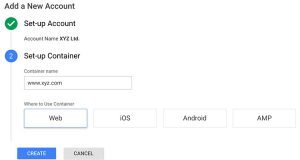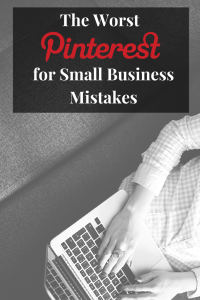It’s a full-time job to keep up with all of the rules for effective SEO, and if you’re like most small business owners, you don’t have time to devote to the task. Algorithms change, and the rules evolve along with them; what worked when you launched your SEO strategy isn’t delivering the same results today.
At the same time, most businesses are beefing up their content marketing efforts, doubling and even tripling the amount of content they publish, in the hope of leveraging those assets into better search rankings. Too often, however, these new content investments are paired with old SEO strategies, leading to disappointing metrics and lousy ROI.
Look at these predictions from a recent report by Moz on the factors affecting search engine rankings this year:
Factors with Increasing Impact
➤Mobile friendliness – up 88%
➤Perceived value of page/site – up 81%
➤Usage (dwell time, CTR) – up 67%
➤Usability/design – up 67%
➤Influence of structured data – up 65%
➤Association with mobile app – up 64%
➤Site speed – up 58%
➤HTTPS – up 56%
Stable Factors
➤Relevance of links
➤Social signals
➤Balance of advertising versus content
➤Incoming links
➤Internal links
Factors with Decreasing Impact
➤Paid links – down 55%
➤Anchor text – down 49%
The rules are changing yet again, and your SEO practices need to keep up. It’s no longer about a laser-like focus on keywords; search is about intent and usability, providing meaningful answers to users’ requests. And content creators need to take note, because “smart” keyword use no longer drives results.
To make SEO work for you in 2016, take some advice from Sun Tzu, the Chinese general and military strategist:
“Strategy without tactics is the slowest route to victory. Tactics without strategy is the noise before defeat.”
Here’s a look at smart SEO strategies and the tactics you can implement to support them.
Figure Out User Intent
Here’s a thought experiment: What do you expect from Google when you query the word “pizza” on your iPhone? Chances are, you’re looking for a place to order a pizza or a pizza place that delivers in your area—and that’s what you’ll get in your top search results. Google has figured out that “where can I order a pizza” is the user intent behind the keyword “pizza.”
User intent is the driving force behind the Panda and Penguin updates and reflects the ongoing shift from static keywords to semantic awareness in search results.
There are three main “intent categories” behind most search queries:
 Navigational: The user knows the specific site he is looking for, such as a brand, company, or person.
Navigational: The user knows the specific site he is looking for, such as a brand, company, or person.
 Informational: The user is seeking an answer to a particular question.
Informational: The user is seeking an answer to a particular question.
 Transactional: The user is ready to take a web-brokered action.
Transactional: The user is ready to take a web-brokered action.

Image via skilledup.com
Some SEO consultants recognize a fourth category, Commercial, which is a hybrid between the Informational and Transactional models. These are queries that may lead to a purchase or conversion; “Honda Civic or Toyota Corolla,” for example, suggests that the user is poised to make a decision but needs more information or validation.
User intent has implications for the entire SEO spectrum. It’s not enough to get clicks anymore; you have to engage users once they land on your site. Are you answering their questions? Are they viewing multiple pages on your site? Now it’s all about the post-click activity—are you satisfying the user intent behind the search? Creating content with the “right” keywords won’t get the job done, your content has to answer the questions those keywords imply.
Identify the Right Keywords
The Adwords keyword planner is a great place to start looking for the keywords and phrases with the highest search volumes, and these will help you identify and sort the terms based on user intent. There are three main “buckets,” or categories. Let’s imagine your business is life insurance:
 Problem Awareness. The searcher knows he has a need/problem/pain point, but he hasn’t landed on a solution (“My partner and I just had a baby; how do I provide for them if something happens to me?”).
Problem Awareness. The searcher knows he has a need/problem/pain point, but he hasn’t landed on a solution (“My partner and I just had a baby; how do I provide for them if something happens to me?”).
- generic (life insurance, life insurance companies)
- more information (life insurance information, when to buy life insurance, should I buy life insurance)
- personal preferences (best life insurance, cheap life insurance)
 Comparison Shopping. The searcher has a good idea of what she wants, but she wants to narrow down her choices or make sure she is getting the best value for her money.
Comparison Shopping. The searcher has a good idea of what she wants, but she wants to narrow down her choices or make sure she is getting the best value for her money.
- direct comparison ([your company name] versus [competitor name], whole life insurance versus term life)
- validation/proof ([your company name] reviews, life insurance company reviews)
 Ready to Buy. The searcher wants something very specific and is trying to find the easiest, most convenient way to purchase it.
Ready to Buy. The searcher wants something very specific and is trying to find the easiest, most convenient way to purchase it.
- get term life insurance quotes
- buy life insurance (+/- online)
- contact [your company name]
Once you’ve identified the keywords behind user intent as they relate to your business, prioritize the ones most likely to convert, i.e. the “ready to buy” keywords and phrases. Make sure your website content addresses the questions and concerns of anyone who searches for these keywords.
Keep in mind, however, that keywords aren’t the alpha and omega of SEO anymore. In the past, if you wanted to rank for “best life insurance,” you only needed to use those keywords the correct number of times, preferably using at least a few H1 and H2 tags.
Now, however, semantic awareness takes precedence. You can talk about your award-winning customer service, your rock-bottom prices, and your amazing customer loyalty, and the Google algorithms will make the connection between your company and “best life insurance” even without those keywords.
Focus on Your Mobile Users

Image via jeffbullas.com
According to eMarketer, 2016 will be the tipping point for mobile devices—the majority of spend, organic search traffic, and PPC will be driven by mobile over desktops and laptops. Consider this data from Google:
➤Half of all consumers will visit a store within 24 hours of performing a mobile search.
➤Nearly 75% of consumers who did a local search on a mobile device visited a store within five miles of their location.
For small businesses, this means a reorientation toward mobile first in all marketing activities. Make sure your website is optimized for mobile, and be sure to claim your business across the Google spectrum (search, Maps, and Google+).
Next, consider the impact of increasing voice search in your SEO strategy. According to Search Engine Watch, search queries starting with the words who, what, when, where, why, and how were up an average of 61 percent year over year, with “who” up 134 percent and “how” up 84 percent, likely due to the rise of voice queries.
Voice queries are also changing the length of the average search: about 75 percent of all search queries contain at least three words.

Image via Search Engine Watch
Think of how most people start a voice search on their mobile device; it’s usually phrased as a question. “When does Target close?” “Where is the nearest Italian restaurant?” “How do you make a banana smoothie?” Focus your SEO on those query words that indicate a consumer is ready to act. What, who, and how show interest, while when and where suggest the consumer is closer to a purchase decision.
It’s also important to make sure your mobile app is search friendly and optimized for search. Now that Google is indexing app content, you can take steps to get your app listed in search results, increasing its visibility and rankings.
Pay Attention to the User Experience
Earlier, we mentioned that perceived value of the page, usability/user experience, and dwell time were increasingly important in search rankings. Google is making over 500 changes a year to their algorithms, and each is focused on making sure the user is getting the right content and a great user experience.
For marketers and SEO, this means creating useful, original content is more important than ever; you want people who arrive on your site after a search to stick around and interact with it. Perhaps the most impactful thing you can do for your SEO efforts this year is to commit to a content calendar that appeals to your customers’ needs and interests.
Keep in mind that some types of content perform better than others; here are some posts that get more traction:
 How-to Articles. Describe a problem, offer a solution, and walk the visitor through each step of the process.
How-to Articles. Describe a problem, offer a solution, and walk the visitor through each step of the process.
 Numbered Lists. These are self-explanatory; you can create your own items or curate them from other posts.
Numbered Lists. These are self-explanatory; you can create your own items or curate them from other posts.
 ”Explainer” Articles. These are “what” or “why” pieces that expound on a specific topic, often comparing one thing to one or more other things, and offering detailed facts and information to support a particular conclusion.
”Explainer” Articles. These are “what” or “why” pieces that expound on a specific topic, often comparing one thing to one or more other things, and offering detailed facts and information to support a particular conclusion.
 Videos. Again, self-explanatory, and you can make one that falls into any of the categories above.
Videos. Again, self-explanatory, and you can make one that falls into any of the categories above.
Size also matters when it comes to content. In the past, short articles (300-500 words) performed well, but now, long articles (1,500 words or more) get best results, perhaps because there are more words and images to rank. These articles also get more social shares, which helps search, too.
Do remember, however, to break up long articles with plenty of bullet points, subheads, and images to promote easy scanning.
When it comes to images, unique, original photos are better, but you can also get good results with stock photos as long as the content surrounding them is original and engaging.
Provide Structured Data
Structured data is the extra information that shows up in your search results next to a website and description; think prices, starred reviews, thumbnails, etc. Structured data is tagged in a way that makes it easily read by search engines.

examples of structured data
Structured data doesn’t just help with search, it also improves your click-through rates if done correctly.
You can also customize the information in your Google “Knowledge Graph” using structured data markups. The Knowledge Graph allows you to customize your logo, contact information, and social profiles, giving you a much more attractive and impressive digital business card.
 Example of the “Knowledge Graph”
Example of the “Knowledge Graph”
Structured data is especially effective for local businesses. Take a look at the Knowledge Graph of a popular local restaurant in Charlotte:

Knowledge Graph for local business
Unless you’re handy with coding, it may definitely be worth your time and money to hire a web developer to handle your structured data markup for SEO. This will make your site more easily crawled for both text-based and voice searches to improve your rankings.
Migrate to HTTPS
Unless you’ve been hiding in a cave, you’ve undoubtedly heard about all the massive data breaches in both the private and public sectors, not to mention the Heartbleed bug. These have pushed security issues to the forefront, and not just for e-commerce and financial services sites, either. In fact, in August 2014, Google announced that it was prioritizing HTTPS as a ranking signal in its search results.
Given Google’s announcement, and consumers’ growing concerns over data security, it’s a good idea for most businesses to invest in an SSL certificate—especially if you have login authentications or store any customer data on your site.
Migrating to a new HTTPS domain isn’t an easy process, and you should be prepared for some short-term decrease in organic traffic. But there is a much larger risk of long-term traffic loss if you don’t move to a secure connection.
Before migrating:
 Document your baseline traffic and rankings so you can monitor your site in the SERPs during and after the migration.
Document your baseline traffic and rankings so you can monitor your site in the SERPs during and after the migration.
 Crawl all your URLs so you can make sure they all redirect to the HTTPS version after the migration.
Crawl all your URLs so you can make sure they all redirect to the HTTPS version after the migration.
 Schedule your migration during the slowest revenue periods to diminish the impact of any temporary traffic reductions.
Schedule your migration during the slowest revenue periods to diminish the impact of any temporary traffic reductions.
Watch out post migration that your pages aren’t loading more slowly due to poor implementation; this will actually have a larger negative impact on your rankings than the positive effect of moving to HTTPS.
Perhaps the most important change in SEO for 2016 is that search is no longer about marketers promoting the content they want their customers to see; it’s about providing the content your audience is looking for. The idea is to give your customers a satisfying experience that meets their needs and makes them happy. After all, a number one ranking won’t deliver results if customers land on your site and click away because they don’t find the information they want.
Digital & Social Articles on Business 2 Community(76)









